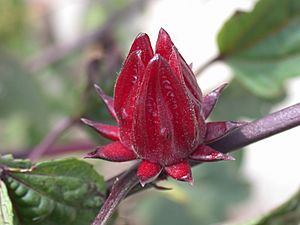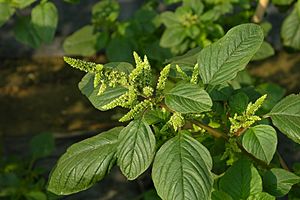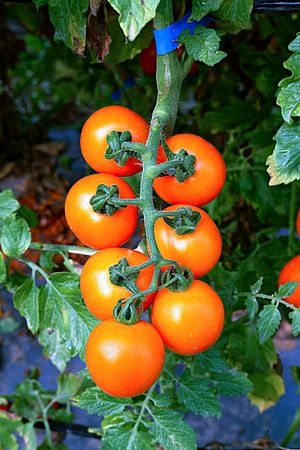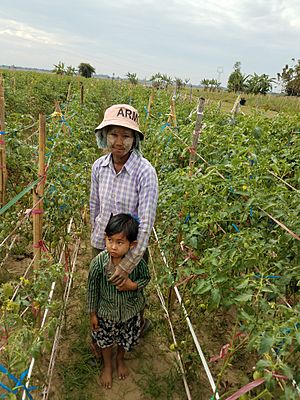World Vegetable Center facts for kids
| Formation | 1971 |
|---|---|
| Type | Nonprofit |
| Purpose | Vegetable research and development |
| Headquarters | 60 Yi-Min Liao, Shanhua, Tainan, Taiwan |
|
Region served
|
Worldwide |
|
Director General
|
Marco Wopereis |
The World Vegetable Center (WorldVeg) (Chinese: 亞蔬—世界蔬菜中心) is an international, nonprofit organization. It focuses on research and development for vegetables. WorldVeg helps reduce malnutrition and fight poverty in many countries. They do this by improving how vegetables are grown and eaten. The center was founded in 1971 in Shanhua, southern Taiwan. It was started by several countries and the Asian Development Bank.
Contents
History of WorldVeg
The World Vegetable Center began in 1971. It was first known as the Asian Vegetable Research and Development Center (AVRDC). Countries like Taiwan, South Korea, Japan, the Philippines, Thailand, the United States, and South Vietnam helped create it. The main campus opened in 1973. In 2008, the center changed its name to the World Vegetable Center.
For its first 20 years, WorldVeg was a major research center for sweet potatoes. They collected over 1,600 different types of sweet potatoes. In 1991, WorldVeg decided to stop its sweet potato research. This was because it was very costly, and other groups started focusing only on sweet potatoes. WorldVeg then shared its research and plant samples with the International Potato Center and the Taiwan Agricultural Research institute.
Research and Development for Vegetables
Growing vegetables that are valuable is important for the Sustainable Development Goals of the United Nations. The World Vegetable Center helps with this goal. Vegetables developed by the Center can be grown in poorer areas. They provide an important source of income for farmers. They also help fight micronutrient deficiencies, which means people get enough vitamins and minerals.
WorldVeg focuses on several important vegetable groups:
- Solanaceous crops: These include tomatoes, sweet peppers, chili peppers, and eggplants.
- Bulb alliums: This group includes onions, shallots, and garlic.
- Cucurbits (Cucurbitaceae): These are vegetables like cucumbers and pumpkins.
The Center also researches traditional or indigenous vegetables. These are vegetables that have been grown in specific regions for a long time. Many of them are not used as much as they could be, especially outside their native areas. WorldVeg has worked with the Global Crop Diversity Trust and Kew Gardens to study how eggplant was first grown by people. The Center is also thought to have the largest collection of chili peppers in the world. They are working to find and grow chili pepper types that can handle climate change.
How Climate Change Affects Food
Experts at the World Vegetable Center are looking at wild relatives of common crops. They hope to use these wild plants to protect our food from the effects of climate change. This research helps make sure we will have enough food in the future.
Germplasm Collection: A Seed Bank
The World Vegetable Center has a very large collection of vegetable germplasm. Germplasm refers to the genetic material of plants, often stored as seeds. This collection is considered the biggest and most diverse in the world. It holds over 60,000 different samples from 442 different plant species. These samples come from 156 countries.
WorldVeg has a system called AVGRIS. This system helps them keep track of all their plant samples. It records information about how the seeds are stored, what they are like, and where they are sent. A backup of the Center's collection is also kept at the Svalbard Global Seed Vault in Norway. This is like a giant safe for seeds, ensuring they are protected for the future.
See also





